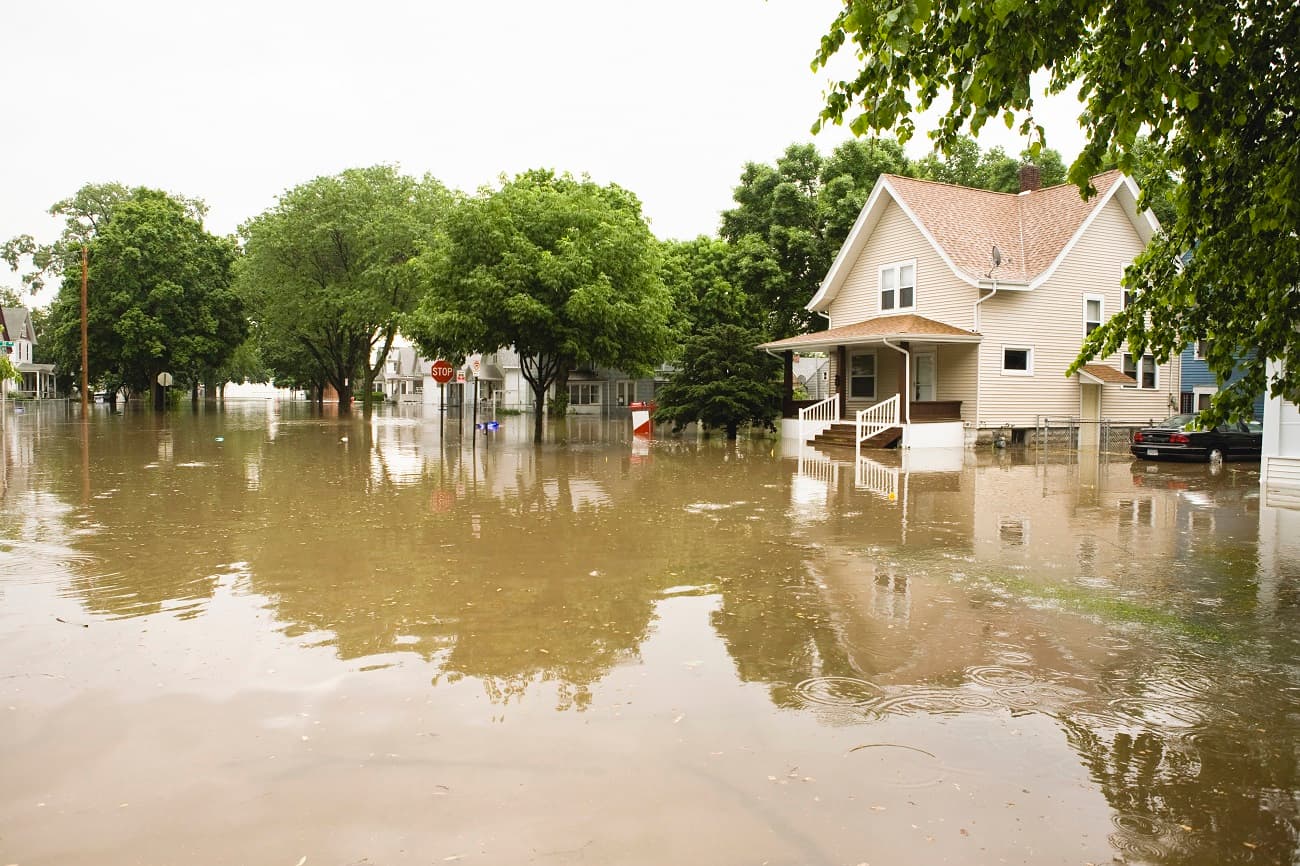Originally published on 05/19/2023
Downloadpdf (PDF: 202 KB)
FEMA started implementing a new flood insurance pricing methodology called Risk Rating 2.0: Equity in Action in October 2021. REALTORS® have been calling for these changes since Congress passed the Biggert-Waters Flood Insurance Reform Act in 2012.
Many misconceptions about the new rating system are still circulating. This document provides the facts.
MYTH:
Risk Rating 2.0 will lead to higher premiums for most National Flood Insurance Program (NFIP) policyholders.
FACT:
With Risk Rating 2.0, FEMA is updating a 50-year-old rating system to price each home individually – rather than by flood zone – and more accurately using modern insurance industry technologies, standards, and science.
Under Risk Rating 2.0, some NFIP rates will increase while others will decrease, depending on each home's flood risk and replacement value. Under the previous system, all rates would continue to climb 18 to 25 percent every year until reaching $87,000 for a $250,000 home under many policies.
Most significantly, Risk Rating 2.0 provides more accurate, science-based rates up front so consumers can make better informed decisions. While the old rating system hid the subsidies, Risk Rating 2.0 tells the truth about the risk and cost to insure a property so people will know before they make a decision to buy or build.
MYTH:
Risk Rating 2.0 will lead to unfair premium adjustments.
FACT:
Risk Rating 2.0 will create a more equitable and sustainable flood insurance program by addressing rating disparities. Low-value properties will no longer subsidize high-value properties.
Under the previous system, policyholders with lower-value homes have been paying more than they should, and policyholders with higher-value homes have been paying less than they should. These lower-value homes have some of the highest rates in the NFIP today.
With Risk Rating 2.0, policyholders with lower-value homes will generally see a decrease in their cost of insurance – as FEMA’s new methodology accounts for more risk variables and rates each home individually.
And, unlike the current methodology, when a property reaches its full risk rate under Risk Rating 2.0, increases stop.
MYTH:
Risk Rating 2.0 changes everything about flood insurance.
FACT:
Risk Rating 2.0 maintains the 18 percent cap on annual increases for most rates. It also preserves grandfathered rates, including those for newly mapped and pre-Flood Insurance Rate Maps (FIRM) subsidized homes. Additionally, policyholders can still transfer discounts by assigning their flood insurance policy to the new owner.
MYTH:
Risk Rating 2.0 “sells out” grandfathered NFIP policyholders.
FACT:
In the early 1980s, FEMA administratively grandfathered a small number of very high-risk properties after consulting a few key members of the congressional authorizing committees.
This informal, behind-closed-doors agreement was designed to provide a temporary patch to address the most absurd results of an outdated methodology until Congress could legislate.
Forty years later, Congress has passed several laws providing clear and specific direction to FEMA on how to set full-risk rates and grandfather certain properties in the NFIP. Risk Rating 2.0 responds to congressional mandates by replacing the original system that had to be patched with administrative grandfathering – and now uses modern technologies, standards, and science to produce accurate and equitable rates.
FEMA conducted a nationwide analysis for Risk Rating 2.0, showing some NFIP rates will increase while others will decrease depending on each home’s unique flood risk and replacement value. This is true for grandfathered properties and all other properties in the program.
MYTH:
FEMA has no basis to raise rates on higher-value properties because they are limited to a maximum of $250,000 for building coverage.
FACT:
Higher-value properties tend to make larger claims to NFIP than lower-value properties. This is what is known in the insurance industry as the “insurance to value” effect, which is why the private insurance market also accounts for replacement cost values in their rate quotes for standard home insurance policies.
For example, if a flood causes only 25 percent damage on a $1 million structure, it will reach the maximum coverage limit payable under the NFIP. Meanwhile, a $100,000 structure will never make a $250,000 claim, even if a flood causes a total loss. Yet, both the $1 million and $100,000 structures can pay the same premium under the old rating system.
Replacement cost value has now been added as a rating factor to ensure properties are insured to value, and lower-value properties are no longer subsidizing higher-value properties.
MYTH:
Risk Rating 2.0 will hurt real estate markets.
FACT:
While NFIP’s 50-year-old rating system hid the subsidies, Risk Rating 2.0 provides more accurate and transparent information up front about the true cost of flood insurance.
While some homebuyers may choose to focus their searches on properties that better match their personal flood risk tolerance and price range, others with higher flood risk tolerance and means could make informed decisions to purchase these properties for the amenities they offer, including living close to water in desired communities.
Economic research generally shows that real estate markets are extremely resilient when faced with new flood risk information, including updated flood maps, flood factors on real estate listings, and even major hurricanes. While there may be an initial dip for some properties, property values consistently rebound within a few months and continue to climb annually, while older stock is replaced with newer, higher-value construction. For the most authoritative economic study to date, please see Hino and Burke (2020)pdf.
MYTH:
Risk Rating 2.0 will delay or complicate transactions, as real estate professionals will now have to offer flood insurance or risk assessments.
FACT:
Real estate professionals will continue to be information sources, not flood experts. Like mold, termites, or other property risks clients may ask about, you can share the facts on flood risk and be prepared with list of qualified, trained professionals – NFIP and private market insurance agents, licensed surveyors, and others – who can answer property-specific risk questions.
MYTH:
New flood insurance rates do not match my experience as a real estate professional with certain neighborhoods and properties.
FACT:
To develop Risk Rating 2.0, FEMA collaborated with PhD flood experts and scientists in a multitude of disciplines using the latest technologies, data, and standards. Real estate professionals are strongly encouraged to refer any insurance pricing concerns to licensed professionals or directly to FEMA at NFIPUnderwritingMailbox@fema.dhs.gov to initiate a one- to two-week review process.
If you would like NAR to take a quote to FEMA for review, please provide the property address, current NFIP rate (typically found on a renewal notice), declarations page, elevation certificate (if available), and permission from the homeowner to work with FEMA on the issue.
MYTH:
I received a different quote from a private flood insurance company, so Risk Rating 2.0’s methodology must be faulty.
FACT:
It is not unusual in the private insurance market to find different rate quotes for the same flood insurance policy. This does not necessarily mean one is right and the other is wrong. Each insurer uses a different flood catastrophe computer model, data, loss experience, judgements, and calibration and validation techniques to assess flood risk.
Risk Rating 2.0, on the other hand, combines and averages multiple catastrophe computer models, uses more data sources and loss experiences not often available to the private sector, and has been carefully calibrated and and validated by independent actuarial experts and scientists.
That said, Risk Rating 2.0 is the first major update of NFIP’s pricing system in 50 years. It would be surprising if FEMA found no issues with the data or results for its more than five million policyholders across the U.S. Please email FEMA at NFIPUnderwritingMailbox@fema.dhs.gov for a one- to two-week review of any rate quote concerns.
MYTH:
Risk Rating 2.0 will undermine equity in flood insurance rates rather than improving it.
FACT:
By aligning NFIP rates to property-specific risk, Risk Rating 2.0 enables all homebuyers to enter transactions with open eyes. This prevents buyers from inadvertently purchasing a home at high risk of damage or that requires flood insurance they will eventually not be able to afford.
The new system also levels the playing field, with lower-value homes typically seeing lower rates while higher-value homes see higher rates. Under the old system, lower-value homes often subsidized higher-value homes. Overall, rates under Risk Rating 2.0 are significantly fairer and more transparent across the board.
Congress requires FEMA to set rates that cover its insurance costs, which are continually rising. Through Risk Rating 2.0, FEMA has ensured that any increases required by statute are distributed more equitably and proportionately to each home’s value and individual risk.
NAR continues to advocate for an affordability program in the next five-year NFIP reauthorization to enhance equity. This could include solutions such as providing financial and technical aid to homeowners who moved into harm’s way before they knew the true risk or further lowering the cap for rate increases.
MYTH:
NFIP rates have doubled or tripled in some places under Risk Rating 2.0.
FACT:
Rates have not doubled or tripled anywhere in the U.S. Some media reports have taken out of context a FEMA projection of what the average full-risk rate might look like given today’s conditions. However, those are not actual rates paid by two-thirds of policyholders, and by law, rates cannot increase more than 18% per year.
Flood risk is also dynamic. Many factors can impact the current projection, including future changes in climate, inflation, and the policyholder population. What FEMA data shows is: 1) most policyholders are not paying a full-risk rate and 2) it will take at least five to 10 years before they do if all things stay the same. The actual 2023 NFIP rate data is available at https://www.fema.gov/flood-insurance/risk-rating/profiles.
MYTH:
FEMA created Risk Rating 2.0 without input from stakeholders like NAR.
FACT:
NAR collaborated directly with FEMA in the development of this new methodology. Risk Rating 2.0 is the culmination of thousands of NAR member hours and research dollars.
Following the Biggert-Waters Flood Insurance Reform Act of 2012, NAR formed a member insurance committee to investigate the sudden, excessive rate hikes. NAR convinced Congress to delay the rates for a decade while we hired independent actuaries and worked with FEMA to diagnose the problem and propose solutions.
In creating Risk Rating 2.0, FEMA adopted most of NAR’s committee recommendations – making this new methodology a big win for REALTORS® and consumers.










